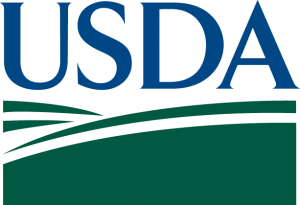 U.S. Department of Agriculture Chief Scientist Chavonda Jacobs-Young announced a nearly $24 million investment across 45 organizations and institutions that teach and train beginning farmers and ranchers.
U.S. Department of Agriculture Chief Scientist Chavonda Jacobs-Young announced a nearly $24 million investment across 45 organizations and institutions that teach and train beginning farmers and ranchers.
“Investing in the professional development of our nation’s newest farmers and ranchers will help our food and agriculture sectors to flourish from the ground up,” said Jacobs-Young, who is also USDA’s Under Secretary for Research, Education and Economics. “Strengthening and growing our next generation pipeline is vital to the continued success of American agriculture and prosperity of rural communities.”
This investment is part of the National Institute of Food and Agriculture’s Beginning Farmer and Rancher Development Program that supports a wide range of professional development activities across an array of important topics for new farmers and ranchers, such as managing capital, acquiring and managing land, and learning effective business and farming practices.
“We recognize that beginning farmers and ranchers have unique needs for education, training and technical assistance. Their success, especially in the first 10 years, often hinges on access to reliable, science-based information and the latest educational resources so they can improve their operations’ profitability and sustainability long-term,” said NIFA Acting Director Dr. Dionne Toombs. “This investment will benefit a rising generation of beginning farmers and ranchers that truly reflect the tapestry of American agriculture and the many diverse communities we serve.”
NIFA’s BFRDP funds three types of projects:
- Standard Projects to new and established local and regional training, education, outreach and technical assistance initiatives that address the unique local and regional needs of beginning farmers and ranchers.
- Educational Team Projects to develop seamless beginning farmer and rancher education programs by conducting evaluation, coordination, and enhancement activities for Standard Projects and other non-funded beginning farmer programs.
- Curriculum and Training Clearinghouse to make educational curricula and training materials available to beginning farmers and ranchers and organizations who directly serve them.
Examples of the 45 newly funded BFRDP projects for FY 2022 include:
- Corporacion Juvenil Para El Desarrollo de Comunidades Sosten: This project will increase the number of farmers and ranchers through a strong recruitment program to include socially disadvantaged farmers/ranchers/veterans in Puerto Rico. It will provide services in entrepreneurship, business training, technical assistance, and natural resource management. ($676,133)
- Pocasset Pokanoket Land Trust: This project will focus on outreach and individualized educational services, as well as technical assistance, to increase understanding of sound business practices among Black Indigenous People of Color beginning farmers. Expected outcomes include increased knowledge in business planning, financial literacy, and soil health among BIPOC beginning farmers. This project will foster collaboration with underserved producers in New England. ($524,040)
- Federation of Southern Cooperatives: This project will cooperatively mentor new and beginning farmers and ranchers in Alabama, Georgia, Mississippi, and South Carolina for regional markets. Impacts will include greater climate-smart agricultural knowledge and practices; and training on land tenure, continuity of family farming operations, stronger farm and forest management, income-earning strategies, estate planning, farm or business plan implementation, and aggregation of small-scale landowners through cooperative development. ($750,000)
NIFA invests in and advances agricultural research, education, and Extension across the nation to make transformative discoveries that solve societal challenges. NIFA supports initiatives that ensure the long-term viability of agriculture and applies an integrated approach to ensure that groundbreaking discoveries in agriculture-related sciences and technologies reach the people who can put them into practice. In FY2022, NIFA’s total investment was $2.2 billion.
USDA touches the lives of all Americans each day in so many positive ways. In the Biden-Harris Administration, USDA is transforming America’s food system with a greater focus on more resilient local and regional food production, fairer markets for all producers, ensuring access to safe, healthy and nutritious food in all communities, building new markets and streams of income for farmers and producers using climate smart food and forestry practices, making historic investments in infrastructure and clean energy capabilities in rural America, and committing to equity across the Department by removing systemic barriers and building a workforce more representative of America.
For news of interest to the specialty food industry, subscribe to Gourmet News.

